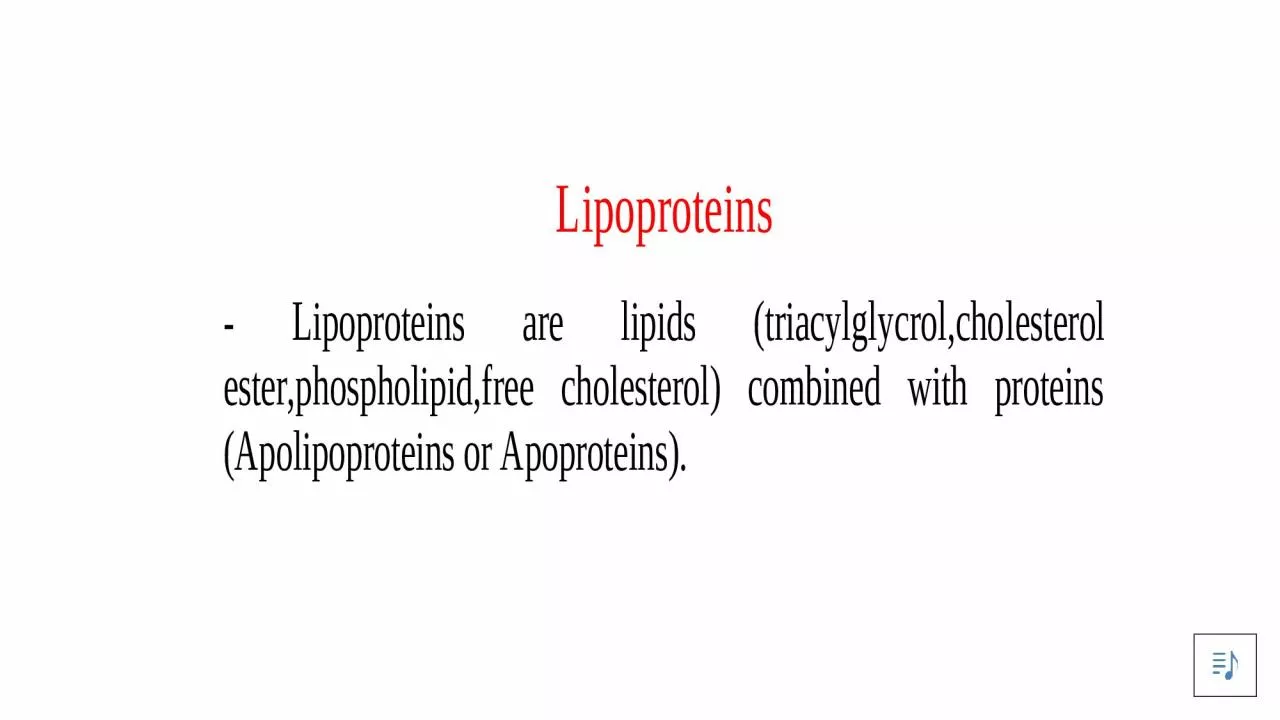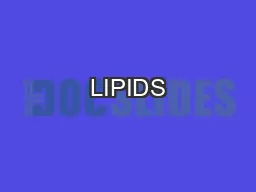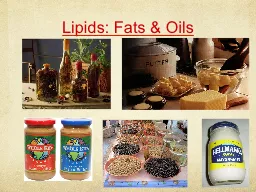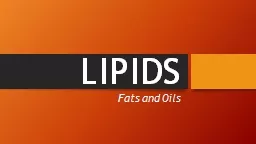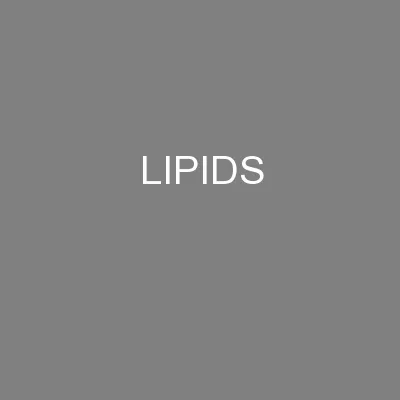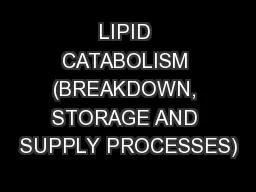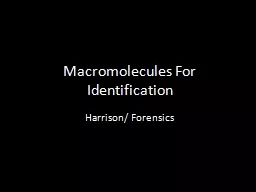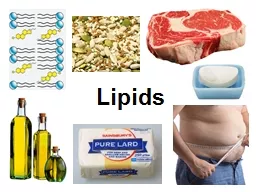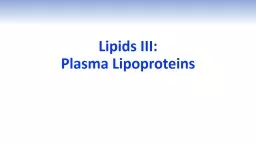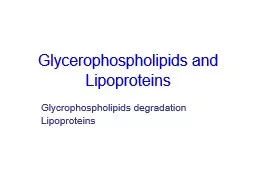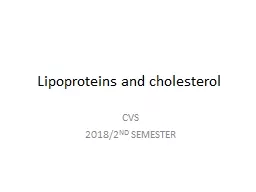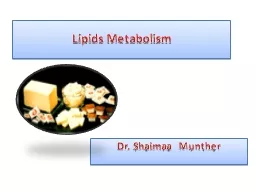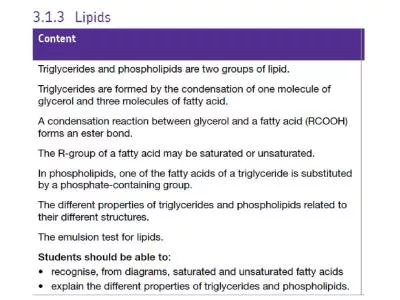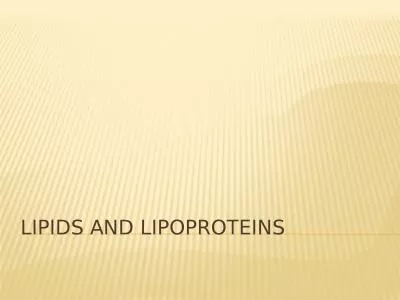PPT-Lipoproteins - Lipoproteins are lipids combined with proteins
Author : TropicalParadise | Published Date : 2022-08-04
Importance of lipoproteins formation 1 Lipids are water insoluble substance and can not be trasported in an aqueous medium blood plasma
Presentation Embed Code
Download Presentation
Download Presentation The PPT/PDF document "Lipoproteins - Lipoproteins are lipid..." is the property of its rightful owner. Permission is granted to download and print the materials on this website for personal, non-commercial use only, and to display it on your personal computer provided you do not modify the materials and that you retain all copyright notices contained in the materials. By downloading content from our website, you accept the terms of this agreement.
Lipoproteins - Lipoproteins are lipids combined with proteins: Transcript
Download Rules Of Document
"Lipoproteins - Lipoproteins are lipids combined with proteins"The content belongs to its owner. You may download and print it for personal use, without modification, and keep all copyright notices. By downloading, you agree to these terms.
Related Documents

